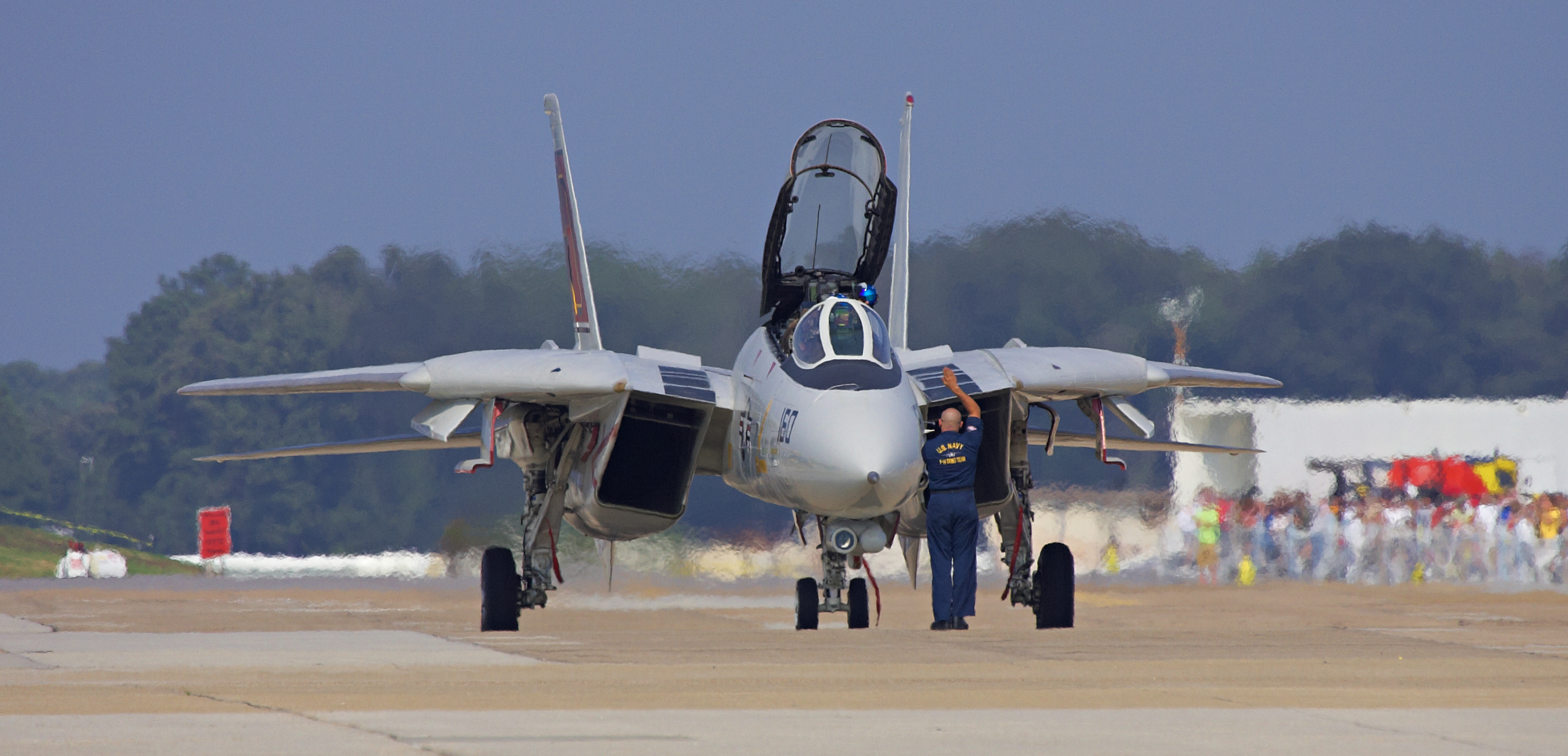-
Posts
150 -
Joined
-
Last visited
Content Type
Profiles
Forums
Events
Everything posted by VF31_Subsonic
-
Standing ready with cash in hand!!!! Sent from my iPhone using Tapatalk
-
LA...great post! Although I was a bit bummed to see the flight models not changed that much, I think having the battlespace more complete is a huge win! Simplified avionics, matter a bit less in the over all scheme as, one posted...when you need CAP support, you don't care how simple the fighter jocks plane is as long as he splashes your boggie!! Hell, the avionics are not THAT simplified so as to make them lame, and I would gladly mount up in a 27 or 15 and light the cans. I was hoping for a jet sim with the diversity of FC2 and flight modeling on par with the A-10c and Su-25t. I hope this is on the roadmap as it can only make things better. If it is not, then it looks like we may have some really robust 3rd party aircraft to plug into the world. All in all, I a very excited and looking forward to what seems like a strong resurgence in our addiction....errr hobby.
-
Not sure why you care about True headings when referencing runways...they are magnetic. True headings are used for planning purposes mostly.
-
runway numbers are to the nearest 10 degrees magnetic, so they may be off for mag heading and dang sure will be off for true.
-
uhhh not the link in page one goes to another thread with a miz file in it
-
odd....can't get that linked file to run on 1.1.0.7. I try to select it and it just pops back to main menu screen...not the one above but the one linked in the other thread
-
Agreed there are essentially 3 techniques...I essentially illustrated two and then three since most folks in combat sims have never really had to deal with cross winds or wind factors modeled this well before and I agree with your points on three, although I doubt we will never fly missions in this sim with winds severe enough to strike weapons on the pavement. Most guys will be lucky to be remotely near center line in that case. I should have added in there this is all in relation to what your headwind component is, but the adding of all the headwing and half the gust to your approach speed is new technique to me. I can see where it gives you a larger margin of error but yes, approach speeds could get out of control in higher winds. Good to know Didn't think so due to weight/track/modeling, put that in there for illustration purposes for those wanting to fly the little ones at some point in life. May as well develop good habits in the sim. Not sure I am onboard with this since although often winds can be the same or even more lower for many reasons. Great detail on all three. As far as trusting the ASI, only the POH can tell you what to expect in deviation when in a slip...not sure how far off it is in the A10 though it does not feel like much. Bottom line is it is variable, challenging since the inputs are changing for gusts and obstacles, but fun as hell and satisfying when you get it down right!
-
Lets say the wind is from the right front quarter....Full right stick raises that aileron, essentially spoiling lift and keeping that wing planted by lessening the chance that the relative wind of a strong gust will raise lift and the wing and create ground controllability issues(or in extreme cases flip a plane). In the sim I dunno how well that is modeled as I have no messed with really strong winds so I am not sure it is essential....but IRL it is SOP (at least in GA aircraft) to aileron into the wind on the ground for a quartering headwind and aileron away for the quartering tailwind. Even if the winds are not extreme it is good practice for that day you land very lightly loaded in strong winds and you wish your habit was to always correct for the wind on the ground no matter how light it is. The airplane is always flying until it is tied down. This link should help you visualize it.... http://www.glenndale.net/flight_training/training_aids/exhibits/Windcorrection.gif
-
hmmm seems like there is an odd multiplier going on...4m/s is essentially 8 knots...but in what direction at what variance. I mean 8 knots is not insignificant but then it is not drastic. It could be significant if the modeling has the direction changing frequently....I need to try that mission tonight...sounds like fun!
-
That is always a good thing...less paperwork
-
The technique is simple in expression and tricky at first in practice. You will be in a crab, nose into the wind, on final. If the crosswind is not too extreme your FPM will be on the touchdown point of the runway and your HUD ladder displaced to one side of the HUD. At about 200-300 feet begin to transition from the crab to a forward slip. This is done by adding rudder input to align your nose with the runway (your HUD ladder should center), while simultaneously banking into the wind, which will be the opposite direction of your rudder input. Hold this all the way to touchdown, adjusting as needed for wind changes(little more or less rudder and bank adjusted...never really one without the other). As you bleed off speed your inputs should become slightly larger as control authority is lesser as speed decays. You will flare with some angle of bank and some rudder input and the upwind wheel should touch down first. Once planted you should be rolling full aileron into the wind to keep the upwind wing planted, although this is not essential in this sim, but proper technique and we are going for realism right? Retract flaps for max braking (less lift more weight on wheels) Roll out as normal with NWS applied at the proper speed. As you refine your skill you can delay your transition from crab to slip until a lower alt or just over the fence even. I recommend the high and early transition to allow you to get a full feel for the wind and allow for alignment corrections down the glideslope so you don't wind up in the grass. Erich, the speed you mentioned has nothing to do with crabs, slips, or thrust (well it still has to do with thrust). When you are flying on gusty days and often that is the case with cross winds but not always, you increase your approach speed by one half the gust spread to avoid stalls when the wind "dies". This is especially important when coming down the pipe in forward slip since you are effectively cross controlled and if you do experience a negative gust you could stall one wing deeper than the other since one wing is experiencing a greater relative wind, and well....thats how spins start and spins that low=BAD. Hope that makes sense.
-
and much of it in IFR....talk about fatigue....hours of hand flown IFR while trying to keep station....then throw in a few joins with a tanker....real pros those guys are/were
-
no screens...hell for A10, you can put hot pics of your girlfriend in there!!
-

Next DCS (US) Fixed Wing Aircraft Wish List
VF31_Subsonic replied to diecastbg's topic in DCS Core Wish List
How about and F-15E...I miss the Janes version and as far as available info for the developers to use...there should be plenty. To have a multi crewed aircraft like that with DCS modeling quality would be the shizzle!!! -
pick up a set of Cougar MFD's from Thrustmaster and your problem is solved. They go for about $50 usd.
-

1:500000 printable DCS/FC2.0 Tactical Chart (WIP)
VF31_Subsonic replied to igormk's topic in DCS: Ka-50 Black Shark
great link....thanks....wish i could a tleast understand the website though...DOH!!! found the language buttone W00t!!! -

1:500000 printable DCS/FC2.0 Tactical Chart (WIP)
VF31_Subsonic replied to igormk's topic in DCS: Ka-50 Black Shark
That is awesome work. Why not make things easier and just buy the real ONC charts for the area and mark out your own obstacles...? You'll want ONC f-3 and f-4 to cover the whole area. I have them both and the sim is quite close. You can get them both here http://www.omnimap.com/catalog/int/onc-list.htm You know what...scratch that....after reading the whole thread....your work goes well beyond marking up existing charts. Well Done!!! I will stick with my ONC versions until yours are available. Keep up the good work. For those who can't wait...you can grab the ONC charts until the goods are available and we all can enjoy. Wish I could find sectional scaled charts for those areas since they would be more managable.


